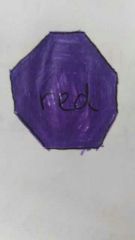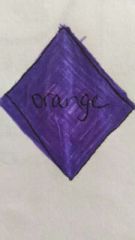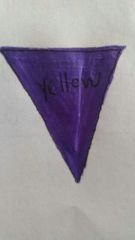![]()
![]()
![]()
Use LEFT and RIGHT arrow keys to navigate between flashcards;
Use UP and DOWN arrow keys to flip the card;
H to show hint;
A reads text to speech;
43 Cards in this Set
- Front
- Back
- 3rd side (hint)
|
________ is the study of matter. |
Chemistry |
|
|
|
________ anything that has mass and takes up space. |
Matter |
|
|
|
Physical property? |
A characteristic of a substance. |
|
|
|
Physical change? |
Change that does not affect a substances size or form. |
|
|
|
Chemical property? |
A characteristic behaviour that occurs when a substance changes into a new one. |
|
|
|
Chemical change? |
When substances react and rearrange their atoms to form a new substance. |
|
|
|
In a chemical reaction, you start with _______ and end up with _______. |
Reactants Products |
|
|
|
What are the five indicators that a chemical change has occured? |
Color change Odor change Formation of gas Formation of a percipitate Energy change |
|
|
|
Pure substance? |
A substance that contains only one kind of particle. |
|
|
|
Elements? |
Pure substances that cannot be broken down into simpler substances. |
|
|
|
What is the difference between heterogeneous mixtures and homogeneous mixtures? |
Het - two or more componets which aren't evenly distributed throughout a mixture (more than 1 phase) Hom - two or more componets that are evenly distributed throughout a mixture (1 phase)
|
|
|
|
What are the three types od special mixtures? |
Solution -homo -1 phase -clear Dispersion -heter -2 phases -meh Suspension -heter -2 phases -cloudy |
|
|
|
_______ are uniform homogeneous mixtures. They are made up of a _______ the substance being dissolved and a _______ the substance doing the dissolving. |
Solution Solute Solvent |
|
|
|
What are the three types of solutions? |
Unsaturated Saturated Supersaturated |
|
|
|
_________ is the process that occurs at saturation point, for every crystal at the bottom that forces its way in a solution, one must come out to make room for it. |
Dynamic equilibrium |
|
|
|
What are the five states of matter? |
Solid Liquid Gas Plasma Bose-Einstein |
|
|
|
What are the six changes in state of matter? |
Evaporation -liquid to gas Condensation - gas to liquid Melting - solid to liquid Freezing - liquid to solid Sublimation - solid to gas Reverse Sublimation - gas to solid |
scremf |
|
|
Atom? |
Smallest part of and element that still constains the properties of thaf element. |
|
|
|
Atomic theory? |
-elements are made up of atoms that are indivisble and indestructible -atoms of the same elements are the same -compounds are formed by a combination of two or more different kinds of atoms -law of conservation of matter -law of definite porportions -law of multiple porportions |
|
|
|
On the periodic table, a row is known as a ______ and a column is known as a ______. |
Period Group |
|
|
|
Standard atomic notation? |
Mass number on top Atomic number on bottom |
|
|
|
WHMIS? |
Workplace hazardous materials information system |
|
|
|
Oxyacids? |
Compound formed when hydrogen combines with a polyatomic ion that contains oxygen. |
Ate - ic Ite - ous |
|
|
The periodic table was first arranged by _______ according to mass number then his student _______ arranged it by atomic number. |
Mendeleev Mosely |
|
|

? |
Danger |
|
|

? |
Warning |
|
|

? |
Caution |
|
|
|
Postive ions are called _______ negative ions are called _______. |
Cations Anions |
|
|
|
Ionic compounds? |
Formed when a metal transfers electrons to a non metal to make them both stable. |
|
|
|
Molecular (covalent) compounds? |
Formed when non metals combine with other non metals. |
|
|
|
Covalent compounds prefixs? |
1 mono 2 di 3 tri 4 tetra 5 penta 6 hexa 7 hepta 8 octa 9 nona 10 deca |
|
|
|
Covalent bonding? |
Two or more non metals sharing electrons to become stable. |
|
|
|
Molecules? |
Two or more non metals joined together be sharing electrons. |
|
|
|
The most common types of compounds that have covalent bonding are ___________. |
Organic compounds |
|
|
|
One particular group of organic compounds are the ________, they are also known as ________. |
Hydrocarbons Fossil fuels |
|
|
|
What are the three types of hydrocarbons? |
Alkanes (all single bonds) 2n+2 Alkenes (one double bond) 2n Alkynes (one triple bond) 2n-2 |
|
|
|
Hydrocarbon prefixs? |
1 meth 2 eth 3 prop 4 but 5 pent 6 hexa 7 hepta 8 octa 9 nona 10 deca |
|
|
|
Catalyst? |
A substance that speeds up a chemical reaction. |
|
|
|
A __________ is a process where by one or more substances are changed into new substances. |
Chemical reaction |
|
|
|
What are the six main types of chemical reactions? |
Complete combustion Incomplete combustion Synthesis Decomposition Single displacement Double displacement |
|
|
|
Complete combustion? |
The products are carbon dioxide and water. |
|
|
|
Incomplete combustion? |
The products are carbon, carbon monoxide, carbon dioxide and water. |
|
|
|
What are the four factors that affect reaction rates? |
Temperature - as the temperature increases the speed of the molecules increase so they are moving faster and breaking more bonds. Concentration - the more molecules packed into a smaller space the greater the number of collisions. Surface area - amount of area of a piece of matter that we can see and is able to react. Catalyst - a substance that increases rate of reaction but is not a reactant. |
|

